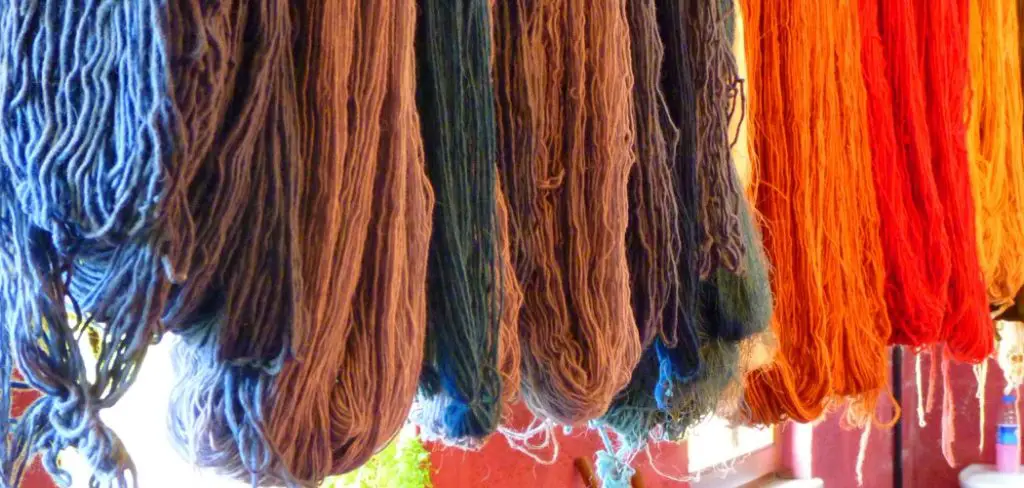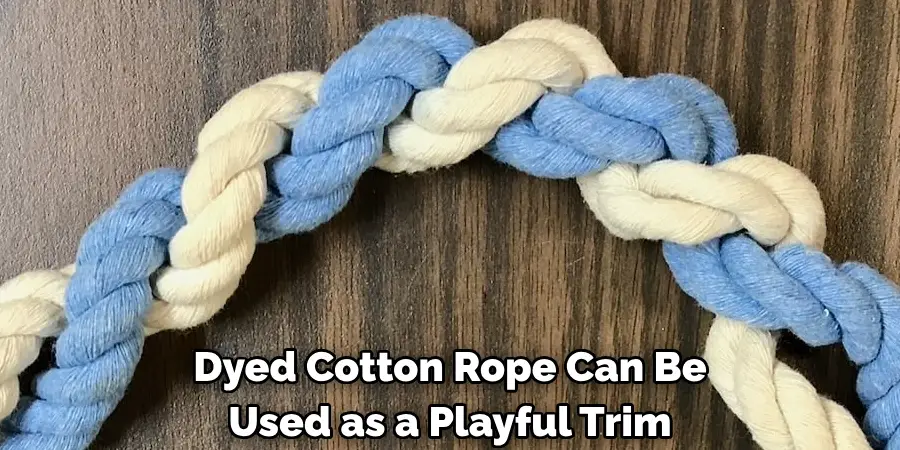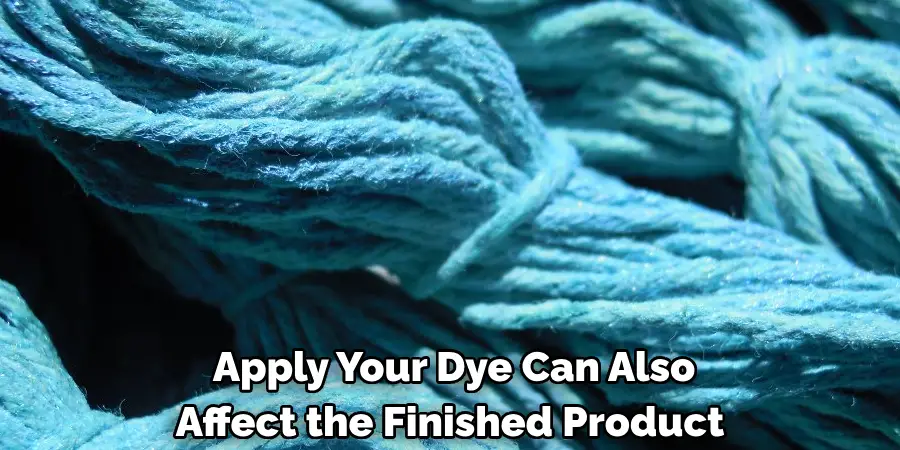If you are passionate about crafts and DIY projects, then you may have already tried working with cotton rope. Cotton rope can create various items, from macrame wall hangings to woven baskets. But have you ever considered dyeing your cotton rope? Dyeing cotton rope is easy and can add extra customization to your projects. In this blog post, we will guide you through how to dye cotton rope so you can create beautiful pieces for your home or as gifts.

Can You Dye Cotton Rope?
Cotton rope is a versatile material that can be used for various purposes, whether you’re crafting, decorating, or organizing. However, sometimes, finding the perfect color to match your project can be difficult. Fortunately, you can dye cotton rope at home to create a customized look.
The key is to choose a dye suitable for cotton and follow the instructions carefully to ensure even color saturation. Whether you go for a bold hue or a subtle tint, your new cotton rope will add a personalized touch to any project. So why not try dyeing your own cotton rope and see what creative possibilities await?
Why Should You Dye Cotton Rope?
If you want a whimsical touch to add to your home’s décor, you should consider dyeing cotton rope. Dyeing cotton rope is an easy DIY project that can give you a personalized and vibrant accent for your room. You can choose from various dye colors to match your existing décor or go for a contrasting color.
Dyed cotton rope can be used as a playful trim for pillows or curtains, as a holder for potted plants, or even as an unexpected feature on the edge of a wall hanging. The possibilities are endless, and with a little effort, you can transform plain cotton rope into a statement piece that will make any room more interesting.

How to Dye Cotton Rope – A Complete Guide
1. Gather Materials
The first step is to gather all the materials you need. You will need a large container, such as a bucket or a sink, to hold the water and dye solution. You will also need a stirring utensil, gloves to protect your hands, and cotton rope. Remember that the amount of dye and water will depend on the amount of rope you are dyeing. Follow the instructions on the dye package for the proper dye-to-water ratio.
2. Prepare Dye Solution
Once you have all your materials, it’s time to prepare the dye solution. Fill your container with hot water according to the instructions on the dye package. Then add the dye and stir with your utensil until the color is evenly distributed. Some dyes may require the addition of salt or vinegar to help the color adhere to the cotton fibers. Read the package instructions carefully before proceeding.
3. Soak Cotton Rope
Now, it’s time to soak your cotton rope in the dye solution. Make sure the rope is fully immersed, and use your stirring utensil to keep the rope moving so the color is evenly distributed. The length of time you soak the rope will depend on how deep of a hue you desire. Generally, a few minutes to an hour will suffice. Remember that cotton rope will soak up the dye more quickly than fabric or yarn, so be mindful of the color intensity.
4. Rinse and Dry
Once you are happy with the color of your cotton rope, it’s time to rinse it thoroughly. Rinse the rope until the water runs clear and all excess dye has been removed. You can then hang the rope up to dry or place it on a towel to air dry. Once it’s completely dry, your dyed cotton rope is ready to use!
5. Experiment with Different Techniques
Now that you have mastered the basics of dyeing cotton rope, you can experiment with different techniques to achieve unique and vibrant colors. Try tie-dye, dip-dye, or multiple colors to create a ombre effect. The possibilities are endless! Remember to follow proper safety precautions and always test your dye on a small piece of rope before dyeing the entire length.

6. Proper Care and Maintenance
To maintain the color of your dyed cotton rope, it’s important to properly care for it. Avoid exposing it to direct sunlight, which can cause fading over time. Also, avoid using harsh detergents when washing the rope, as they can strip the color. Instead, use a mild detergent or hand wash with gentle soap and water.
7. Get Creative!
Dyeing cotton rope opens up a world of DIY projects and crafts possibilities. You can use your dyed rope to create unique home decor and jewelry or even as an accent piece in your wardrobe. The only limit is your imagination! So have fun and get creative with your dyed cotton rope. Happy crafting!
5 Considerations Things When You Need to Dye Cotton Rope
1. Colorfastness
When dyeing cotton rope, it is important to ensure the color is fast. This means that the color should not fade or run when exposed to water or sunlight. To ensure colorfastness, it is best to use a commercial grade of dye specifically designed for cotton rope and follow the manufacturer’s instructions carefully. Additionally, pre-washing the rope in hot water before dyeing can help reduce any shrinkage during the dyeing process.

2. Dye Type
Several types of dyes are available for use on cotton rope, including acid dyes, fiber-reactive dyes, and natural dyes. Acid dyes are generally used for light colors like pastels and whites, while fiber-reactive dyes are better suited for darker colors such as blues and blacks. Natural dyes are made from plant or animal sources and can be used to create a variety of colors.
3. Dye Strength
It is also important to consider the strength of the dye when dyeing cotton rope. Stronger dyes will produce more vibrant colors but may require more time and effort to apply correctly than weaker ones. When using a stronger dye, it is best to start with a lighter shade of color and gradually build up to the desired shade rather than trying to achieve it in one application.
4. Dye Temperature
The temperature at which you apply your dye can also affect the finished product. Generally speaking, higher temperatures will result in brighter colors, while lower temperatures will produce softer shades of color. Suppose you are unsure about what temperature is best for your project. In that case, it is recommended that you consult with a professional who specializes in dying fabrics or textiles before proceeding with your project.
5. Aftercare
Finally, it is important to consider how you will care for your dyed cotton rope after it has been dyed. It is best practice to wash your dyed rope separately from other items in cold water with mild detergent before drying it flat or hanging it up away from direct sunlight or heat sources such as radiators or fireplaces.
3 Benefits of Dye Cotton Rope
1. Durability
Dyeing cotton rope is a great way to make it more durable and long-lasting. Cotton rope is naturally strong and resistant to wear and tear, but dyeing it can further enhance its strength and durability. The dye penetrates the fibers of the rope, which helps to protect them from damage caused by sunlight, moisture, or other external forces. This makes dyed cotton rope an excellent choice for use in outdoor applications such as hanging plants or securing items to a fence or wall.
2. Aesthetics
Another benefit of dyeing cotton rope is that it can give it a unique color and texture that can enhance its aesthetic appeal. Dyeing cotton rope with bright colors can create an eye-catching piece of decor that will stand out in any room or outdoor space. It also adds texture to the material, making it feel softer and more inviting than untreated cotton rope.
3. Versatility
Finally, dyeing cotton rope provides versatility since you can choose whatever color you want for your project. Whether you are looking for bright colors for a decorative piece or muted tones for something more subtle, dyeing cotton rope allows you to customize the look of your project in any way you desire. This makes dyed cotton rope an excellent choice for those who want to add their own personal touch to their projects.

Some Common Mistakes People Make When Trying to Dye Cotton Rope
Dyeing cotton rope is a great way to bring life to an otherwise boring piece of rope. However, some common mistakes can make your effort and time go down the drain. One of the frequent mistakes is not washing the rope beforehand, which can result in uneven dyeing and poor color penetration. Another mistake is not soaking the rope in water and the dye solution long enough.
Incomplete soaking can result in a blotchy and uneven color that ruins your project’s aesthetic. Additionally, not stirring the rope and dye mixture frequently enough can result in uneven coloring. Lastly, not rinsing the rope enough after dyeing can also cause the bleeding of colors and fading over time. With these common mistakes in mind, you can successfully dye your cotton rope and create something beautiful for your project.
Conclusion
Dyeing cotton rope is a simple but effective way to add a custom element to your DIY projects. You can create beautiful pieces that are uniquely yours by following the steps outlined above. Remember to experiment with color and techniques, and most importantly, have fun! With a little creativity, your dyed cotton rope projects will be the envy of all your friends. Thanks for reading our post about how to dye cotton rope.
